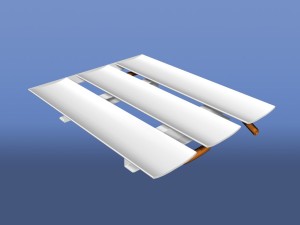 Advantages – Energy Efficiency
Advantages – Energy Efficiency
Using panels or sails to satisfy sensible room loads instead of all-air systems, greatly reduces the supply air volume required (typically by 60-80%). This leads to reduced fan power requirements and associated energy savings.
Thermal Comfort – Radiation conditions a space more comfortably than convection. Since radiant heating/cooling uses minimum primary air quantities, air velocities are lower in the occupied space, minimizing draft risk.
Improved Air Quality – Radiant systems are typically partnered with dedicated outdoor air systems (DOAS) to deliver fresh outdoor air for ventilation purposes and avoid the recirculation of pollutants typical of all-air systems.
Quiet Operation – The reduction in air-side mechanical equipment inherent of a radiant systems results in less noise, and thus a quieter, more comfortable occupant experience. At water velocities below 4 fps, radiant panels and sails produce imperceptible noise levels.
Smaller Footprint – The reduced supply air volume of a hydronic system reduces ductwork requirements, resulting in the ability to reduce plenum heights. This allows radiant systems to be installed in tight spaces, and creates the potential for lower construction costs, higher ceilings, and more usable floor space. In addition, the air handling equipment is often downsized – saving cost and providing more flexibility in locating the equipment.
Reduced Maintenance – Due to the reduction in moving parts and mechanical equipment associated with radiant panels, these systems have lower maintenance costs than all-air systems.
